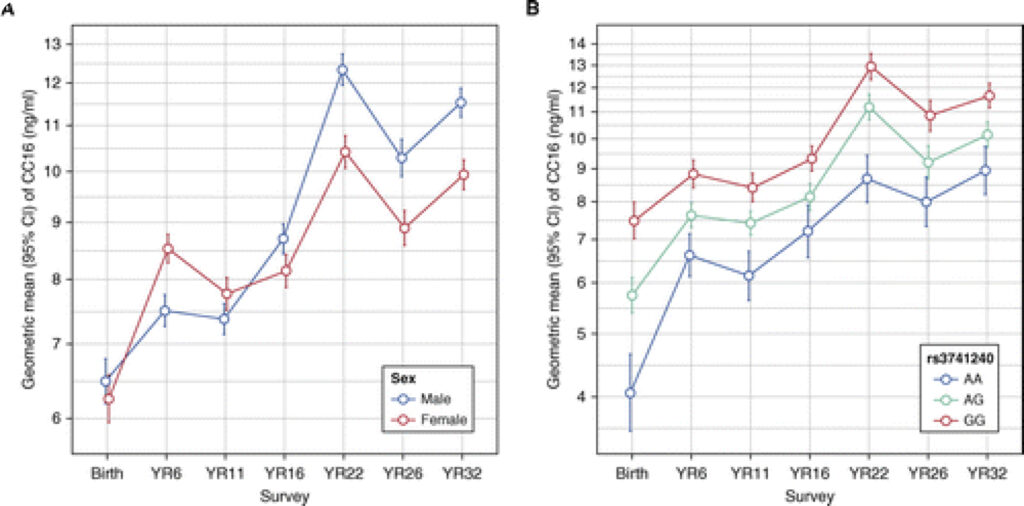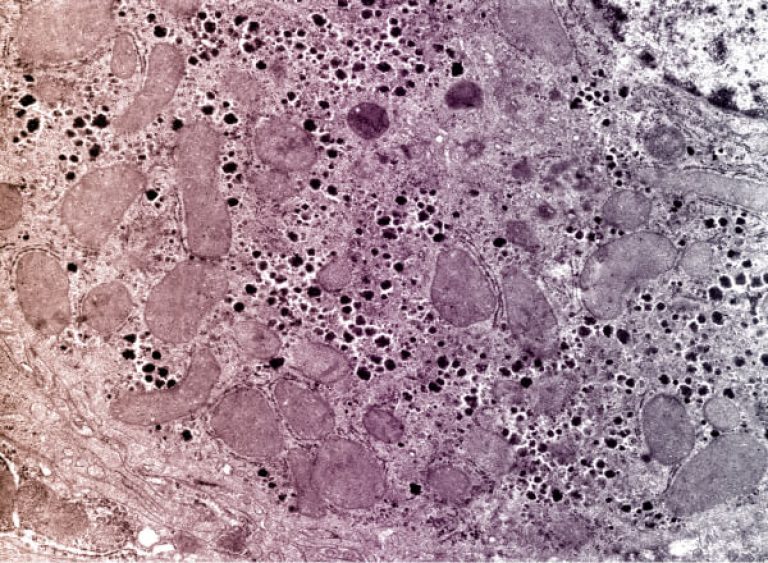The club cell secretory protein CC16 is a pneumoprotein present in circulation but mainly produced by club cells and other nonciliated airway epithelial cells (1–3). Its biological functions have not been conclusively elucidated, but findings from in vitro studies (4) and mouse models (5) support antiinflammatory and antitoxicant properties of CC16 in the lung.
In line with this scenario, CC16 deficits in blood and airways have been associated with asthma (6), chronic obstructive pulmonary disease (7), impaired growth of FEV1 in children (8), and accelerated FEV1 decline in adults (8). Whether CC16 plays a direct role in lung health or it represents an early indicator of alterations in airway epithelial cell functions, understanding the trajectories of serum CC16 from childhood into adult life and the early factors that control such trajectories is a critical initial step to evaluate the possible use of this protein in risk stratification and/or early prevention of lung disease.
In the present study, we used data from the Tucson Children’s Respiratory Study, a prospective birth cohort study that recruited 1,246 healthy infants between 1980 and 1984. Questionnaires were completed by the primary caregiver at enrollment within weeks after the child’s birth, and again when the child was 6 years old. Blood samples were collected from umbilical cord at birth and by venipuncture at ages 6, 11, 16, 22, 26, and 32 years. Circulating CC16 levels were measured in serum, using a commercially available ELISA kit (BioVendor). For 78 participants at Year 6, only plasma was available and a correction factor was applied to their CC16 concentrations to enable comparison with serum samples, as described previously (8).
We tested multiple early-life factors for association with serum CC16, including participant’s sex, ethnicity/race, gestational age at birth, type of delivery, ponderal index, feeding practices in the first 9 months of life, and genotype for the SNP rs3741240, which is located in the 5′ untranslated region of the CC16-encoding gene SCGB1A1 (secretoglobin family 1A member 1) and is a known protein quantitative trait locus for serum CC16 levels (9). Genetic analyses were restricted to participants with both white (either Hispanic or non-Hispanic) parents. We also evaluated maternal age at delivery, parental education, and maternal and paternal smoking both at enrollment (child’s birth) and at Year 6. Participants completed confidential questionnaires on active smoking starting at age 11 years. To rule out the possibility that the effects of some early-life factors (particularly parental smoking) on later serum CC16 levels were a result of confounding by active smoking later in life, sensitivity analyses were completed with further adjustment for cumulative pack-years of participants up to age 32 years.




![2025 RIS showcase company_banner-signature-650 x 150 (2)[63] 2025 RIS showcase company_banner-signature-650 x 150 (2)[63]](https://aspirotx.com/wp-content/uploads/elementor/thumbs/2025-RIS-showcase-company_banner-signature-650-x-150-263-r4ct5hpv3cumv4qvdn3anpf886awyr43mq6b3gm03i.jpg)